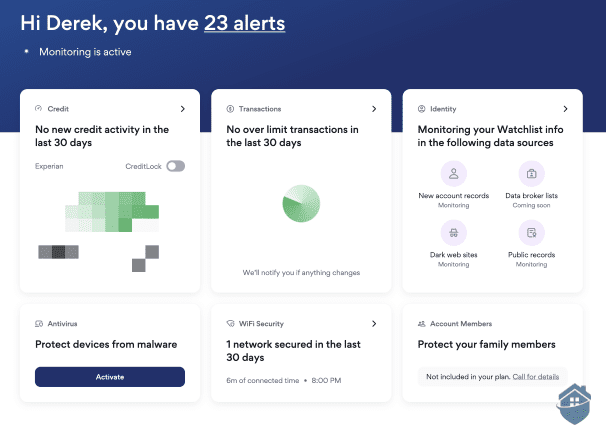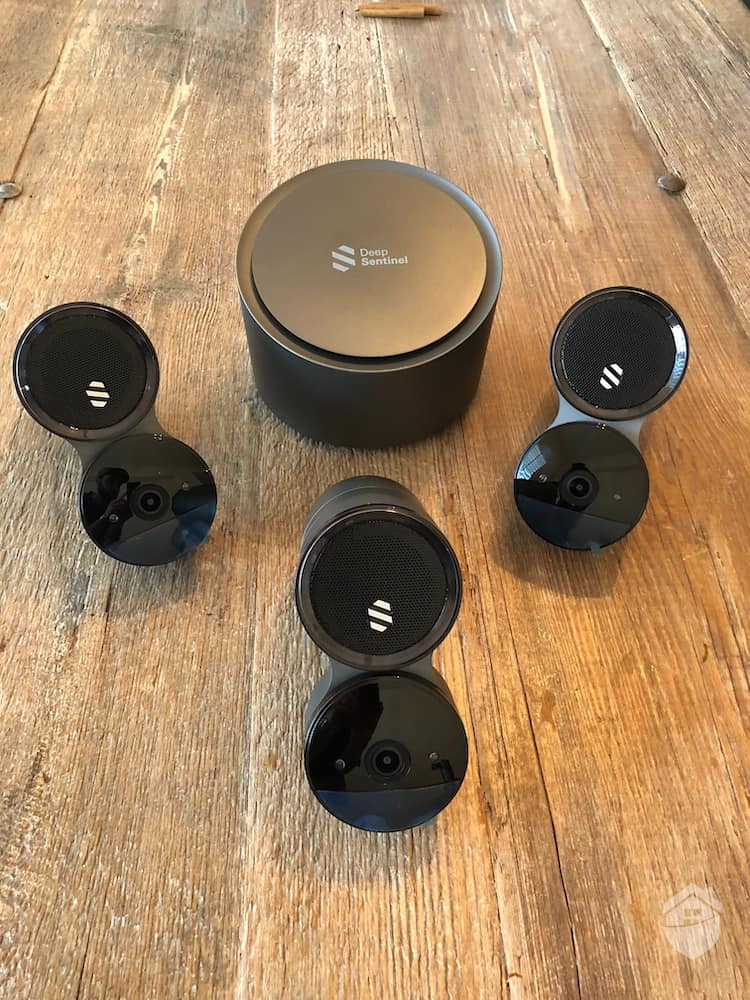You might be shocked to learn RV theft and vandalism costs owners over $150 million annually and insurers over $2 billion.1 Yet many RV owners focus solely on mechanical maintenance while overlooking the security vulnerabilities that change dramatically with each season.
Our experts identified the most effective seasonal protection strategies after analyzing crime statistics, testing dozens of security products, and consulting with law enforcement. We’ll show you how to adapt your RV security approach to each season’s unique challenges, so that your mobile investment stays protected year-round.
>> Get Started: The Best RV Security Systems in 2025
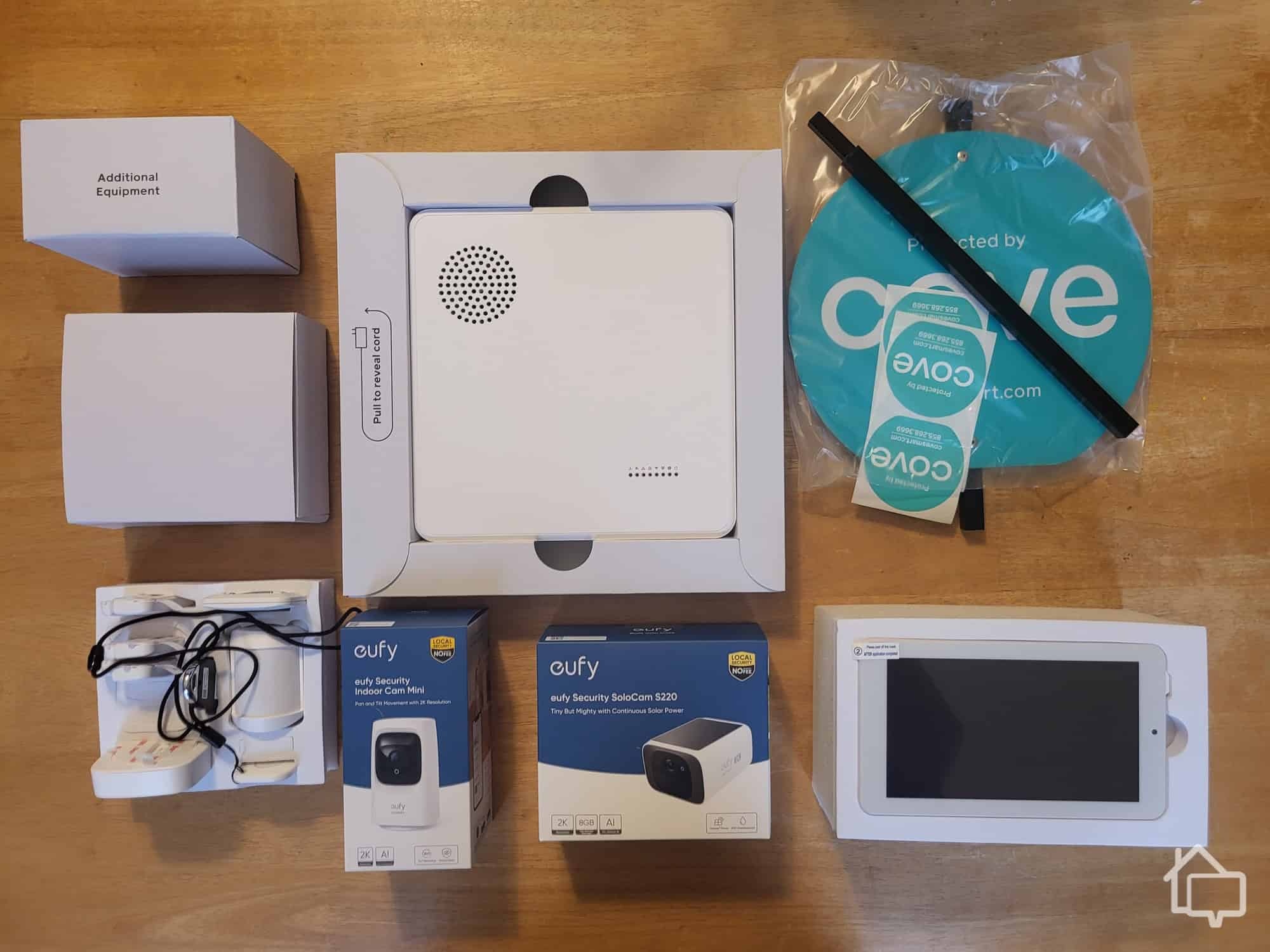
Cove is one of the security systems we recommend for RVs since it’s easy to set up and connects to cellular networks.
Understanding Seasonal Security Risks
Before jumping into security strategies, it’s important to understand the specific risks RVs face. This will help you create an effective plan to keep your RV protected throughout the year.
Spring: The Preparation Season
Spring represents the highest-risk period for RV security breaches. After months of winter storage, many owners discover security systems that have failed, batteries that have died, or physical damage (squirrels in the engine bay, anyone?) that compromises their RV’s protection.
And thieves often target storage facilities during the spring transition period, when increased activity makes suspicious behavior less noticeable. Spring vulnerabilities to be aware of include:
- Dead batteries in security systems
- Moisture damage to electronic components
- Compromised locks from freeze-thaw cycles
- Increased foot traffic at storage facilities
- Owner complacency after months of inactivity
Summer: Peak Activity and Exposure
Over 25 million RV trips were recorded in 2024, with the summer months being the most popular season by far.2 This increased activity creates both opportunities and vulnerabilities for RVers.
Crowded campgrounds sound safer because there are other campers to spot suspicious activity, but they also create opportunities for thieves to blend in. Popular destinations can also struggle with understaffed security. Meanwhile, remote “boondocking” locations mean you’re on your own to protect yourself.
Some concerns are:
- Theft of external equipment and accessories
- Break-ins during short absences from campsite
- Opportunistic crime in high-traffic areas
>> Find Out: How Common is Burglary in the U.S.?
Fall: Transition Vulnerabilities
Fall presents unique challenges as RV traffic decreases but hasn’t yet reached winter lows. Many storage facilities reduce their security presence, while seasonal campgrounds begin closing, forcing RVers into unfamiliar locations.
Weather becomes increasingly unpredictable too, potentially disabling security equipment or forcing emergency stops in less secure locations.
Winter: Storage and Reduced Vigilance
Winter storage creates the longest period of vulnerability for most RVs. Storage facilities vary widely in their security measures, and reduced check-in frequency means problems can go undetected for months.
RVs in storage often face more theft or vandalism compared to those in active use, especially in the last two months of winter.
Expert Tip: Check your RV’s security systems monthly during storage, even in winter. A quick 15-minute inspection can prevent thousands of dollars in losses.
Spring Security Checklist
We recommend beginning your spring security preparation at least two weeks before your first planned trip. This timeline allows for equipment replacement or repair without delaying your travel plans. These are the steps we suggest following.
Test all electronic security components
- Motion sensors and door/window alarms
- Battery levels in wireless devices
- GPS tracking system functionality
- Security camera operation and recording
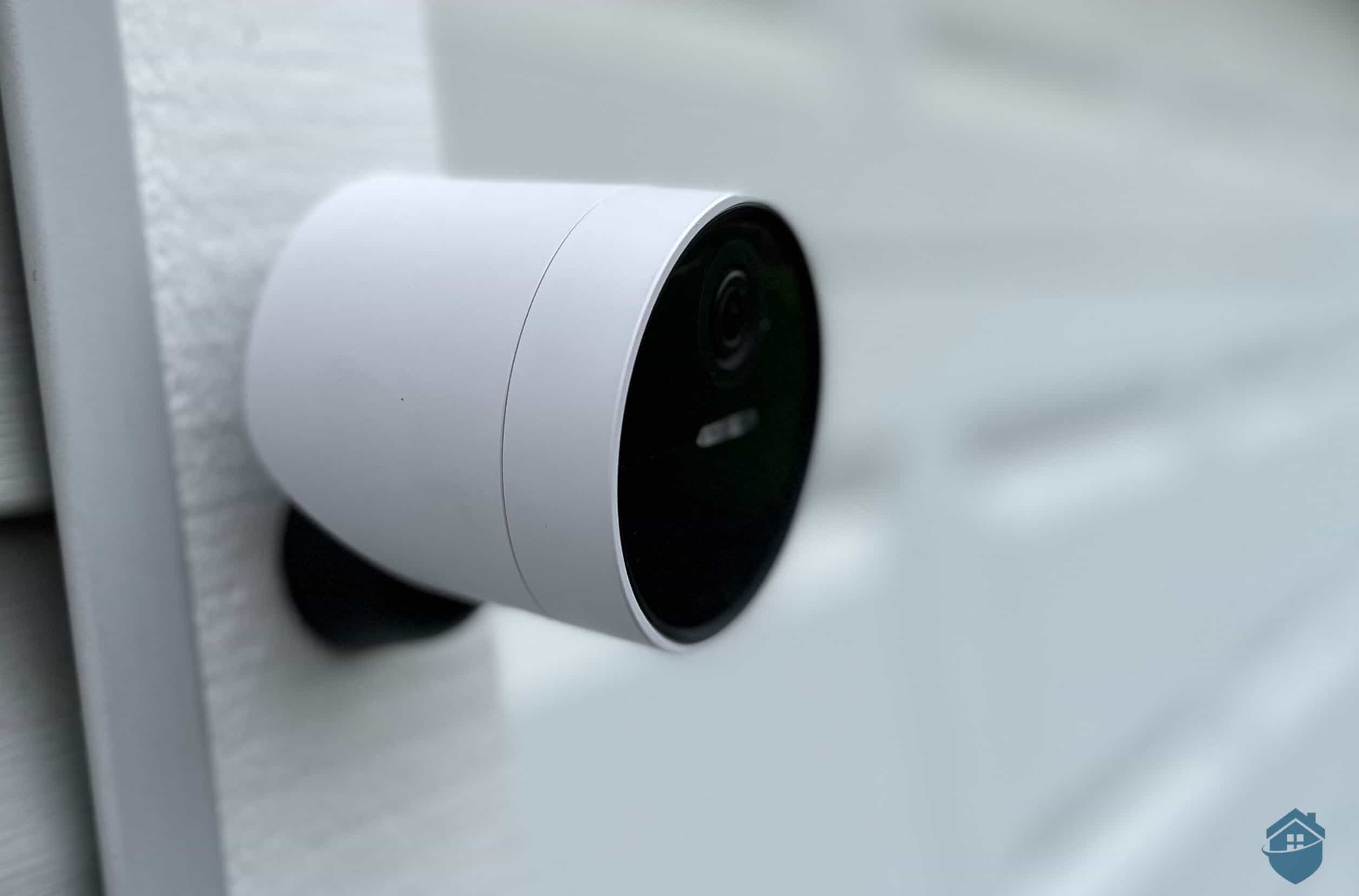
SimpliSafe’s Outdoor Camera is battery-powered and can work well to protect your RV.
Inspect physical security measures
- Lock operation and key functionality
- Hitch locks and wheel boot condition
- Window and door seal integrity
- External compartment security
Evaluate storage facility security
- Assess any changes made during winter months
- Verify access control systems are functioning
- Check perimeter security and lighting
Essential Spring Upgrades
Based on our testing of 35+ RV security products, certain upgrades provide the highest return on investment for spring preparation.
Top-Priority Upgrades:
- Wireless security system with smartphone alerts (prevents the common issue of dead monitoring equipment going unnoticed)
- Solar-powered perimeter lighting (addresses reduced visibility after winter storage)
- Heavy-duty hitch lock with alarm feature (combats increased theft attempts during spring preparation season)
Budget-Friendly Options:
- Motion-activated LED spotlights ($25 to $45 each)
- Window film for privacy ($40 to $80 per RV)
- Upgraded door and compartment locks ($15 to $35 each)
Documentation and Insurance Review
Spring is also the best time to update your security documentation and review insurance coverage. We recommend photographing all security equipment installations and maintaining current serial number records. Start by creating a comprehensive inventory that includes:
- Security equipment purchase dates and warranties
- Installation photos showing proper mounting
- Serial numbers for all electronic devices
- Contact information for monitoring services
Expert Tip: Store digital copies of your security documentation in cloud storage accessible from your smartphone—you’ll need this information quickly if an incident occurs while traveling.
Summer Security Strategies
Not all campgrounds provide equal security protection. It can vary from one place to another, so when picking a spot for your next camping trip, check that these security measures are in place:
- Controlled access with key cards or codes
- Regular security patrols during evening hours
- Adequate lighting throughout the facility
- Clear sight lines between campsites
- 24/7 on-site presence of management
Conversely, we recommend keeping out of campsites with these red flags:
- Open access with no entry control
- Isolated sites with poor visibility
- Inadequate lighting after dark
- No on-site management overnight
- History of recent security incidents
Daily Security Routines
Establishing consistent security habits during summer travels significantly reduces your vulnerability to opportunistic crime. Before you leave your RV unattended, do the following:
- Secure all entry points. Lock doors, windows, and external compartments.
- Remove tempting items from view. Hide electronics, cash, or valuable equipment in a safe location, away and not visible from windows.
- Activate security systems. Arm motion sensors, alarms, and GPS tracking.
- Inform trusted neighbors. Let adjacent campers know your departure time and expected return.
When you return:
- Check for signs of tampering before entering, such as broken locks and windows, doors left ajar, and other disturbances.
- Verify that security systems remain armed and check activity logs.
High-Risk Situation Management
There are also certain summer occasions that might require some extra security measures.
Festival and Event Camping
Large gatherings create elevated theft risks due to increased foot traffic and reduced surveillance effectiveness. Security experts recommend parking in well-lit areas closer to main facilities, even if premium fees apply.
Extended Day Trips
Implement maximum security protocols when leaving your RV, especially if it could be for more than four hours. This includes activating all security systems, removing all visible valuables, and arranging for periodic check-ins from other campers.
Popular Tourist Destinations
High-traffic areas attract both legitimate tourists and opportunistic criminals. One pro tip here is to research crime statistics for specific destinations, and adjust your security measures accordingly.
Fall and Winter Storage Preparation
The quality of your storage facility directly impacts your RV’s security during the most vulnerable months. Our research of storage facility security found dramatic differences in protection levels, even among facilities with similar pricing.
Long-Term Storage Security Setup
Preparing your RV for extended storage requires different security strategies than active travel periods. The goal shifts from deterring opportunistic theft to preventing deliberate targeting over months of reduced monitoring. Here’s an overview of some advanced measures.
| Comprehensive alarm system protection | Physical deterrent enhancement | Valuable item removal |
|---|---|---|
| Full-camera systems with
multiple sensor types (motion, door, window) In-app activity alerts with push notifications enabled |
Heavy-duty wheel boots on all wheels
Multiple hitch locks with different key patterns Window coverings to prevent interior viewing Decoy security system stickers and signage |
Electronics and entertainment systems
Tools and outdoor equipment Important documents and personal items Anything with resale value under $500 |
Winter Maintenance and Monitoring
Even in storage, your RV’s security systems require periodic attention to maintain effectiveness. Experts recommend monthly inspections during storage periods.3 Some of the steps to follow include:
- Test security system operation and battery levels
- Check physical locks and deterrent devices
- Inspect for any signs of tampering or attempted entry
- Verify GPS tracking system functionality
- Document RV condition with dated photographs
Expert Tip: Set smartphone reminders for monthly storage inspections. Consistent monitoring is the most effective deterrent against long-term storage theft.
RV Security System Recommendations
Based on our comprehensive testing and expert consultation, RV security systems fall into several different categories with various levels of effectiveness. Here are our recommendations, from Basic to Advanced:
Basic Protection
- Battery-powered door/window alarms
- Motion-activated exterior lighting
- Basic hitch and wheel locks
- Window security film
Best for: Weekend campers with limited storage needs
Our pick: Cove, combined with other physical security measures such as locks and window films
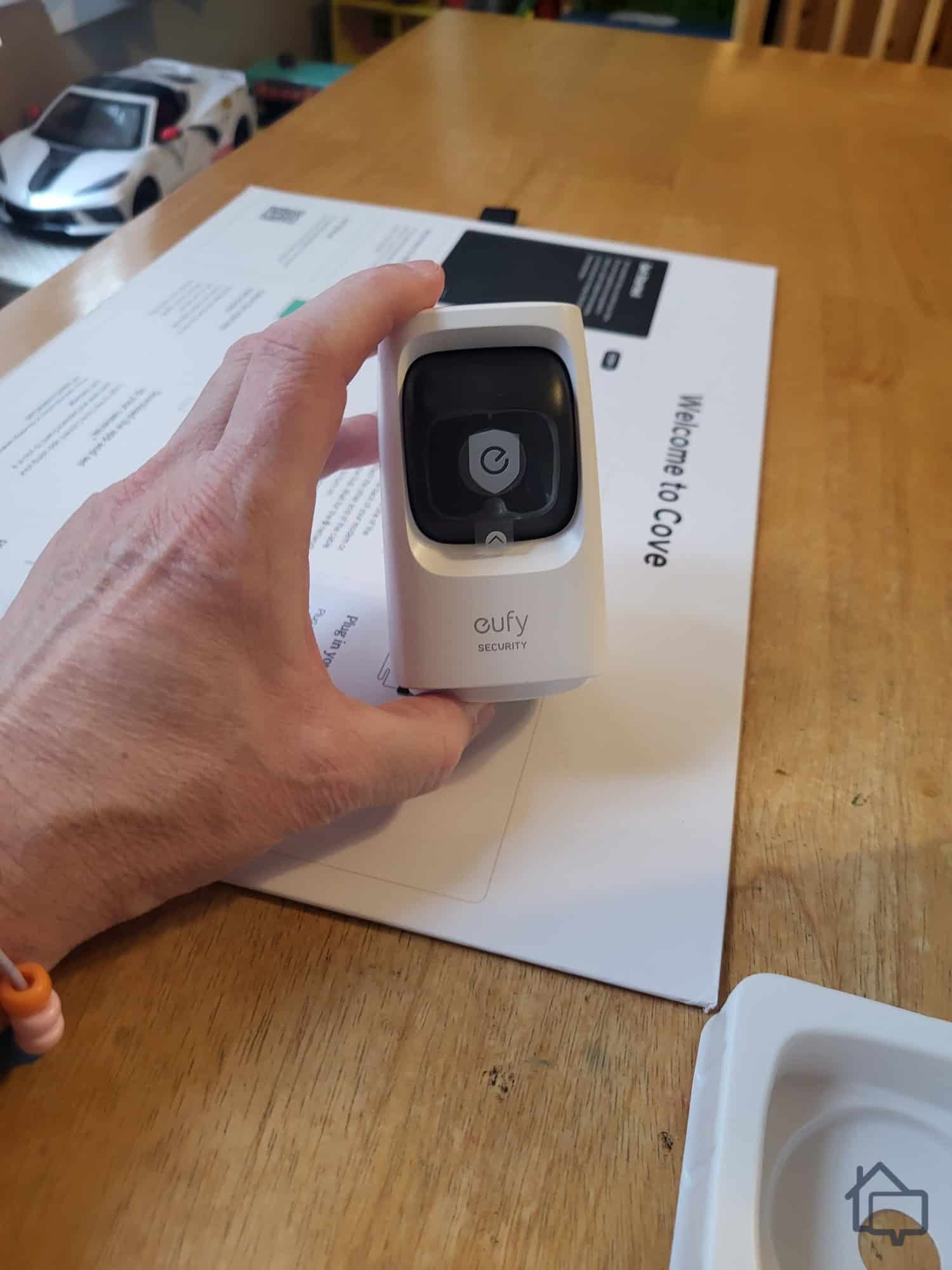
Cove’s tiny indoor camera can pan and tilt, plus it won’t take up a lot of precious space inside your RV.
Intermediate Protection
- Wireless security system with smartphone alerts
- Solar-powered perimeter lighting
- Heavy-duty wheel boots and hitch locks
- Basic GPS tracking device
Best for: Regular RVers with seasonal storage requirements
Our pick: SimpliSafe, connected to an RV internet setup
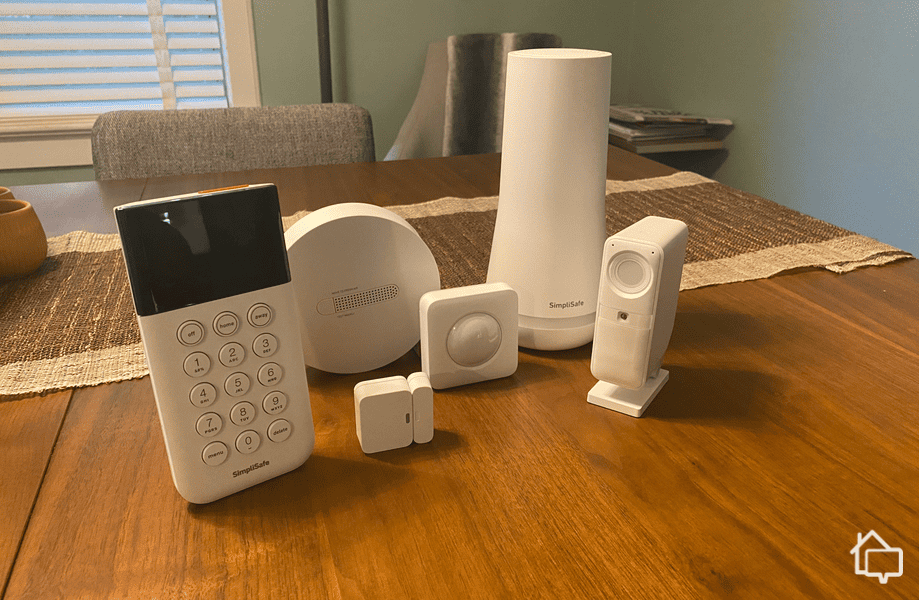
SimpliSafe’s security system is easily scalable if you decide you need more protection in the future.
Advanced Protection
- Professional-grade alarm system with optional 24/7 monitoring
- Integrated camera surveillance system
- Real-time GPS tracking with geofencing alerts
- Smart locks with remote access capability
Best for: Full-time RVers and high-value motorhomes
Our pick: ADT, including their battery-powered, outdoor-rated security camera, the Nest Cam (battery)
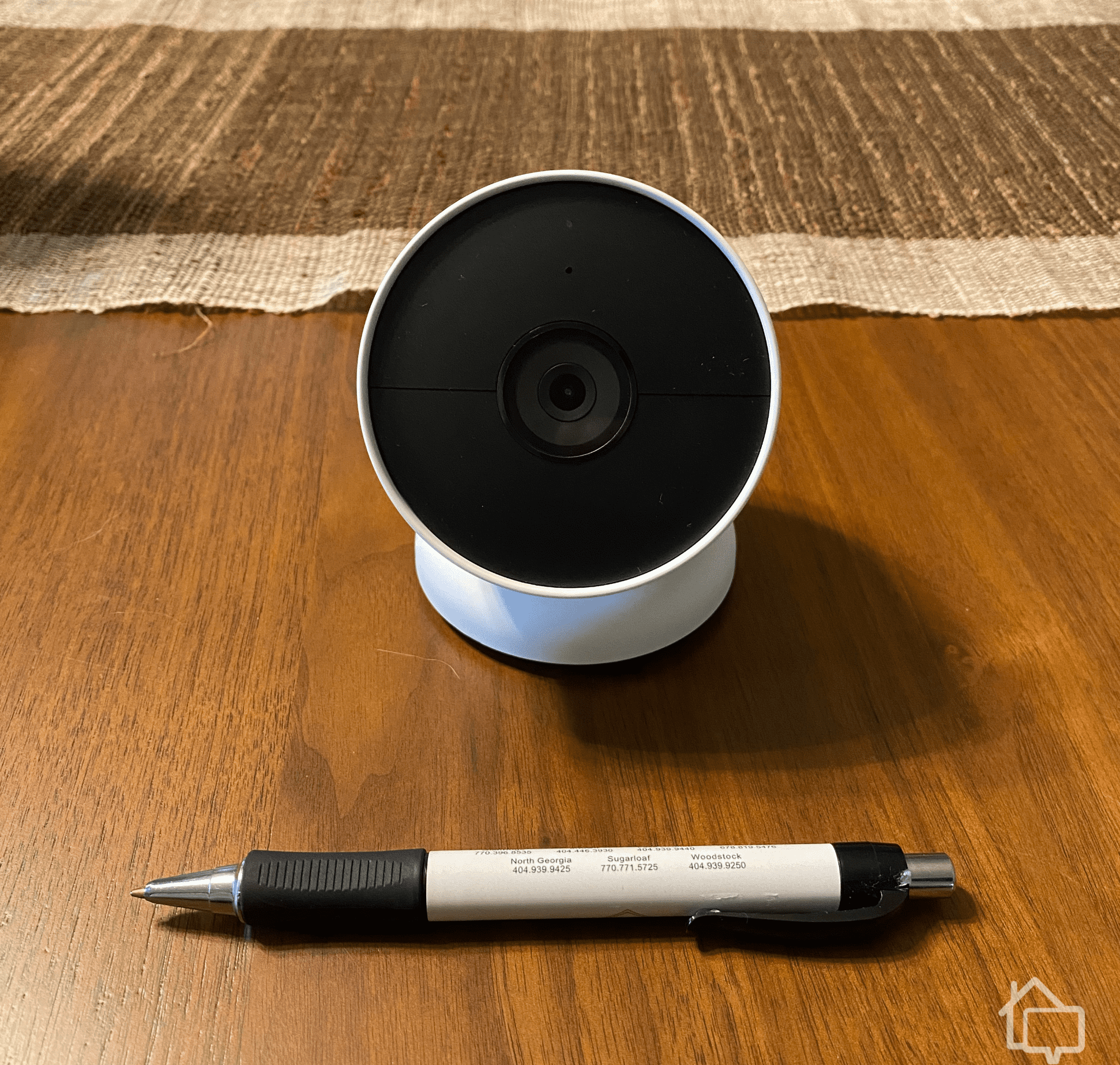
ADT’s Google Nest Cams are easy to install and perfect for RVs of all sizes.
Year-Round Safety
Effective RV security requires adapting your protection strategy to each season’s unique challenges and opportunities. The investment in comprehensive security measures provides protection for an asset that may represent decades of travel dreams and retirement planning.
The time to enhance your RV security is before you need it. Begin with your current season’s recommendations, then plan ahead for upcoming transitions. Your future self will thank you for the preparation, and your RV will be there waiting for the next adventure, safe and secure.
FAQs
- How often should I test my RV security system?
Test all security components monthly during active use and before each trip after storage. This ensures batteries remain charged and all sensors function properly when needed.
- What's the most cost-effective security upgrade for occasional RV users?
Motion-activated LED lighting combined with heavy-duty wheel boots provides excellent deterrent value for under $200. These require no installation and work in any location.
- Should I remove my security equipment when selling my RV?
Keep receipts and documentation, but leave installed systems—they increase resale value. Portable items like wheel boots and GPS trackers can transfer to your next RV.
- Do security systems work in areas without cell phone coverage?
Battery-powered alarms and motion lighting work anywhere, but systems requiring cellular communication need coverage for remote monitoring. Consider satellite-based GPS trackers for remote travel.
- How do I verify a storage facility's security claims?
Visit during evening hours to assess actual lighting and activity levels. Ask for references from long-term customers and check local police reports for facility-related incidents.
- What should I do if I discover my RV security has been compromised?
Don’t enter the RV—call the police immediately and document everything with photos. Contact your insurance company before moving or cleaning anything.


